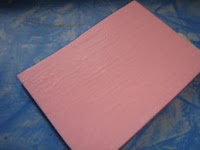The following are the results of experimenting with different transfer methods (ways of getting an image onto the carving material).
This is a "summary" photo of all the methods I tried:
From left to right....
Iron / Heat Transfer
Acetone
Pencil Transfer
Iron / Heat Transfer
Acetone
Pencil Transfer
Wintergreen Oil
The transfer from the Wintergreen Oil is by far the darkest and most clear. I took the other "experiment" images (not including the pencil transfer) and used Wintergreen Oil to try to transfer the image darker.
This is a photo of the results.
So......in conclusion, I am 'sold' on Wintergreen Oil as my preferred method of transfering images from a toner-based print-out to the carving material.



























